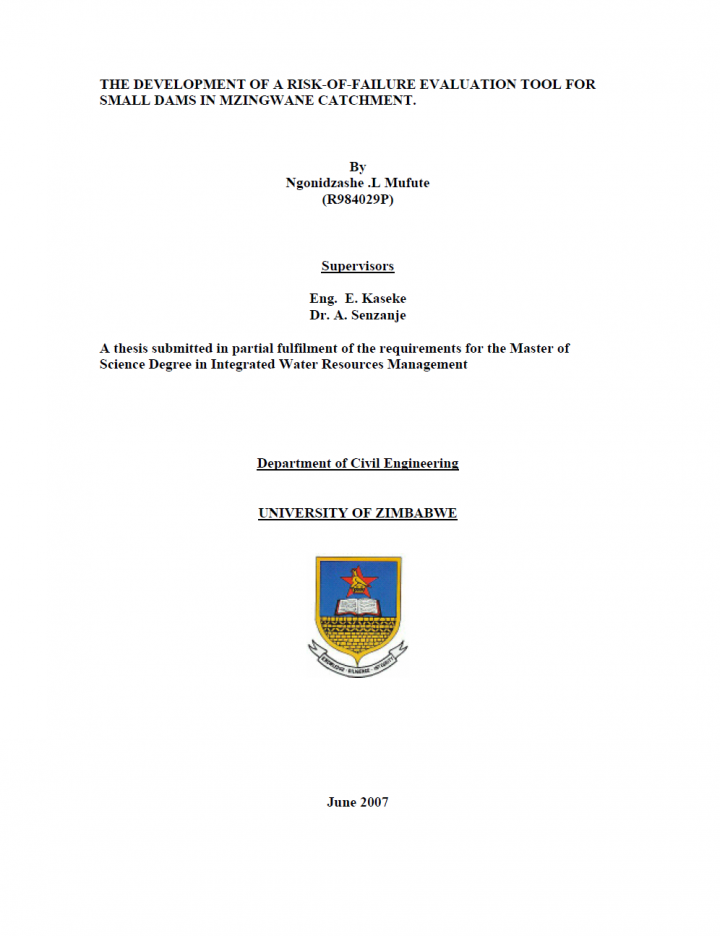The development of a risk-of-failure evaluation tool for small dams in Mzingwane catchment
Mufute, N. L. (2007)

Published in: 2007
Pages: 99
Publisher:
University of Zimbabwe
Author:
Mufute, N. L.
Uploaded by:
SuSanA Admin
Partner profile:
common upload
825 Views
11 Downloads
World wide attention is given to the prevention of failure of medium to large sized dams, with little attention being paid to small dams. As a result the physical condition of small dams is generally poor, making them susceptible to failure. However, small reservoirs are an important source of both primary and productive water for rural communities. It is against this background that this study was carried out to assess the current physical condition of the small dams in the area of study and the factors responsible for this condition. The Information was used to develop a risk of failure evaluation tool for small dams. The tool helps to systematically and objectively classify risk of failure of small dams, there by assisting in the ranking of dams to prioritise for maintenance or rehabilitation purposes. This is important where resources are limited. The tool makes use of factors criteria such as seepage, erosion and others that are conventionally used to assess condition of dams. The description of the extent to which the criteria affect the physical condition of small dams was then standardised. This was mainly guided by similar methods used in other countries but mostly for large dams and by HR Wallingford’s methodology for estimating risk of soil erosion. Cause effect diagrams were used to determine the stage at which each factor is involved in contributing to dam failure. Weights were then allocated to each factor depending on its stage in the process of causing dam failure. Small dams design and maintenance guidelines were also used to guide the ranking and weighting of the factors. The risk of failure was then classified as low, moderate, high or very high. The tool was used to classify 7 small dams in Mzingwane catchment. One was found to have a moderate risk of failure, 4 had a high risk of failure and 2 had a very high risk of failure. Also, results of the physical assessments carried out in the study area indicated that the majority of the reservoirs in the studied area were designed and constructed following the recommended design guidelines. However there was a general lack of maintenance on the dams, which resulted in deterioration of the reservoirs condition. At least 68% of the reservoirs were affected by erosion. At least 65% of the dams had trees growing and termite mounds on their embankment dam walls. A significant number of the dams (59%) were old, over 27 years old and probably past their economic lifespan. The physical condition was thus not inline with the recommended condition. The reasons can be broken down into lack of resources by responsible authorities such as DDF, limited stakeholder collaboration, unclear policies of handing over small dams to the communities. It was concluded in the study that the risk of failure of small dams in the area is high and security of water availability is threatened. The risk of failure evaluation tool could be used to help prioritise the use of the little available resources to target the most threatened dams for repair or rehabilitation. The tool needs to be tested in a wider geographical area to improve its usefulness.
Bibliographic information
Mufute, N. L. (2007). The development of a risk-of-failure evaluation tool for small dams in Mzingwane catchment. University of Zimbabwe
Filter tags
Case studies in other formats English Practitioners Sub-Saharan Africa Water (irrigation, process, other)














